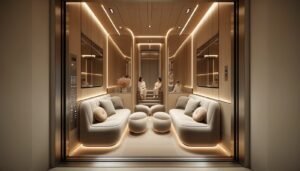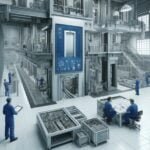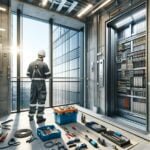
Lifts, often known as elevators, are more than just about going from floor to floor in the world of contemporary construction. These days they form a crucial component that enhance the overall comfort and experience of being in a particular enclosed space. Lift design thus form a critical consideration in increasing and enhancing user comfort in buildings across sizes, be they homes, retail malls, skyscrapers or simple multi-storied buildings.
Let’s thus examine how user comfort comes center-stage in the design of contemporary elevators.
First, think about the cabin’s surroundings.Despite being there for a very short duration (though it depends entirely upon the size of the building and the floors to be visited), the inside of contemporary lifts, i.e., the carriage, the cabin or the car as they are normally referred to in contemporary lingo, is intended to be welcoming and comfortable for users. Big and roomy, modern interiors with their share of lighting and wall creations all add to the feeling of open and comfortable existence. Furthermore, the use of premium materials like metal, glass, and wood gives the cabin a sense of elegance and improves user enjoyment.
Next, Noise reduction.An important component of elevator design that improves user comfort is in the area of noise management and reduction. Loud and continued noises in a lift when in motion are not anyone’s favorite thing to happen. Contemporary lifts are additionally outfitted with cutting-edge soundproofing mechanisms that greatly reduce noise levels within the cabin. Every effort is thus taken to provide passengers with a calm and serene environment within the cabin, which includes insulated walls to quieter motors and mechanisms.
An added area to enhance comfort and provide a smooth ride lies in vibration management.Given the many forces at work when an elevator moves, there is always the possibility that part of it gets filtered into the cabin making it uncomfortable for lift users. Coming to their assistance are cutting-edge vibration-dampening mechanisms that mitigate the effects of mechanical vibrations that ensure a smooth and steady ride, even in the tallest of buildings or fastest of rides.
Ergonomics stands as another important consideration in lift design.From entrance to control panel to lighting and fans, everything needs to be thoughtfully designed to ensure passengers have the most comfortable ride possible. Modern lifts are increasingly becoming user-friendly and comfortable with the addition of handrails, seating options, and adjustable lighting, which meet the needs of all users, including those with impairments.
In conclusion, user comfort is given top consideration in the design of contemporary lifts if its creators and makers are to survive as an entity. Every element of lift design, including the cabin atmosphere, vibration control, noise reduction, and ergonomic elements, is intended to improve the entire experience for passengers. Lift designers are thus tasked with the activity of building environments that not only perform well but also give consumers a pleasant and joyful experience. So, the next time you enter a lift, pause to recognize the effort and consideration that goes into making rides comfortable and easy.




Add comment